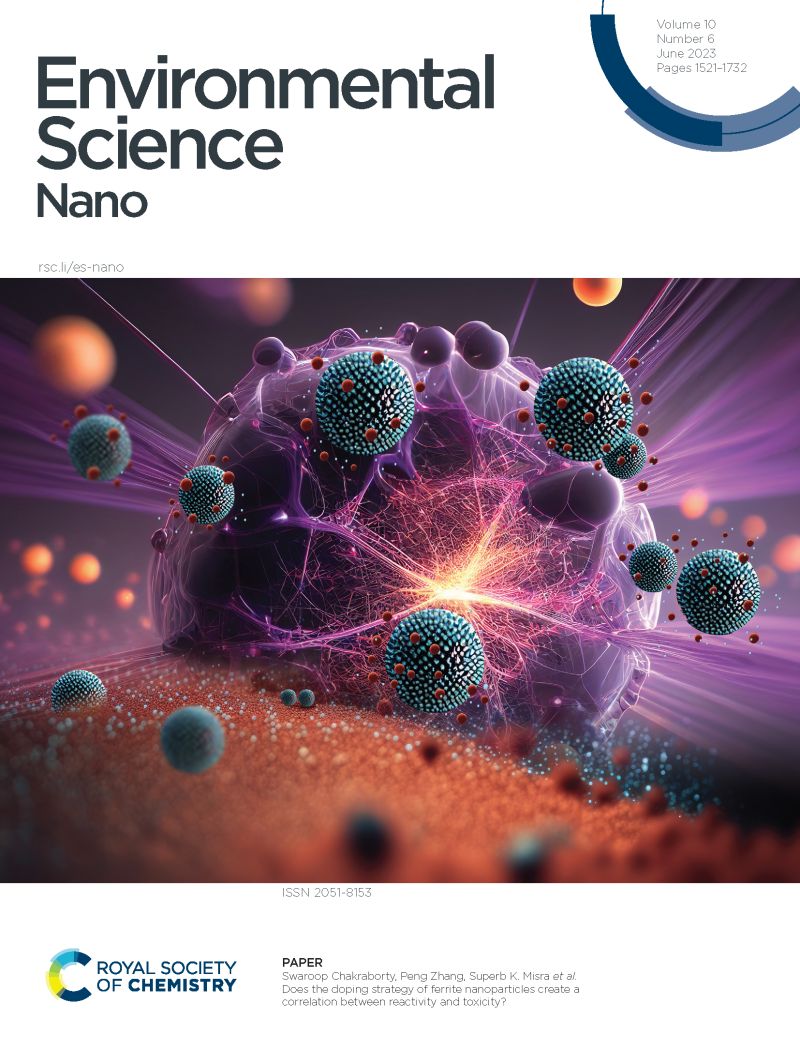Recuperative potential of nano-biochar to alleviate arsenic toxicity in soybean (Glycine max): Modulation of uptake, morphological and biochemical properties
IF 5.1
2区 环境科学与生态学
Q1 CHEMISTRY, MULTIDISCIPLINARY
引用次数: 0
Abstract
Arsenic (As) accumulation in soils is steadily rising, making it increasingly toxic to a variety of crop plants and humans. As reduce plant productivity by interfering with several molecular, biochemical, and morphological aspects of plant metabolism. Therefore, introducing new agents to address these issues is imperative. This study demonstrates the effective use of nano-biochar (nano-BC) to mitigate As stress toxicity in Glycine max (soybean) plants. We determined the effect of nano-BC (1% w/w) on mitigating As (50 µM) stress in soybean by examining various growth parameters and metabolic attributes. As stress inhibited plant height (by 51%) and net photosynthetic rate (by 50%) and caused the buildup of reactive oxygen species (ROS); however, nano-BC treatments significantly reversed all these parameters. Moreover, the As stress increased malondialdehyde (by 78%) and hydrogen peroxide (by 67%), which were partially reversed by nano-BC in the As-treated plants. This outcome may be attributed to activation of the plant defense response, particularly antioxidants, triggered by nano-BC. Overall, As tolerance in soybeans was positively regulated by nano-BC. However, additional research is required to fully understand the intricate mechanisms behind nano-BC and its defense mechanism against As.纳米生物炭减轻大豆(甘氨酸max)砷毒性的恢复潜力:摄取、形态和生化特性的调节
砷(As)在土壤中的积累正在稳步上升,使其对各种作物和人类的毒性越来越大。它们通过干扰植物代谢的一些分子、生化和形态方面来降低植物的生产力。因此,引入新的代理来解决这些问题势在必行。本研究证明了纳米生物炭(nano-BC)对大豆As胁迫毒性的有效缓解。我们通过考察大豆的各种生长参数和代谢特性,确定纳米bc (1% w/w)对缓解As(50µM)胁迫的效果。由于胁迫抑制了植株高度(51%)和净光合速率(50%),并引起活性氧(ROS)的积累;然而,纳米bc处理显著逆转了所有这些参数。此外,砷胁迫增加了丙二醛(78%)和过氧化氢(67%),这在砷处理的植物中被纳米bc部分逆转。这一结果可能归因于纳米bc触发的植物防御反应,特别是抗氧化剂的激活。总的来说,纳米bc对大豆的As耐受性有正向调节作用。然而,需要进一步的研究来充分了解纳米bc背后的复杂机制及其对As的防御机制。
本文章由计算机程序翻译,如有差异,请以英文原文为准。
求助全文
约1分钟内获得全文
求助全文
来源期刊

Environmental Science: Nano
CHEMISTRY, MULTIDISCIPLINARY-ENVIRONMENTAL SCIENCES
CiteScore
12.20
自引率
5.50%
发文量
290
审稿时长
2.1 months
期刊介绍:
Environmental Science: Nano serves as a comprehensive and high-impact peer-reviewed source of information on the design and demonstration of engineered nanomaterials for environment-based applications. It also covers the interactions between engineered, natural, and incidental nanomaterials with biological and environmental systems. This scope includes, but is not limited to, the following topic areas:
Novel nanomaterial-based applications for water, air, soil, food, and energy sustainability
Nanomaterial interactions with biological systems and nanotoxicology
Environmental fate, reactivity, and transformations of nanoscale materials
Nanoscale processes in the environment
Sustainable nanotechnology including rational nanomaterial design, life cycle assessment, risk/benefit analysis
 求助内容:
求助内容: 应助结果提醒方式:
应助结果提醒方式:


